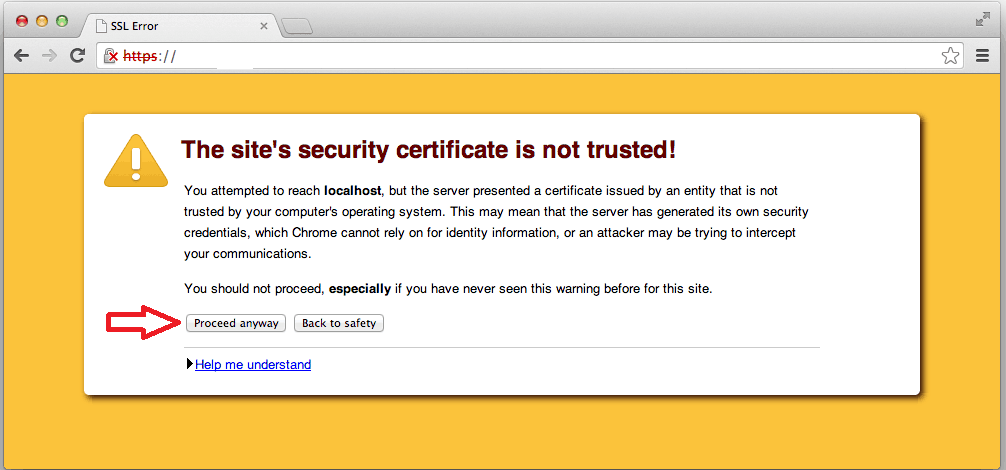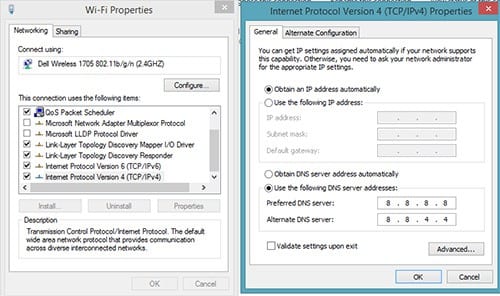Often, we face a scenario wherein we cannot access few websites from our work-places, schools, colleges etc. Sometimes few websites will be blocked by our ISP or sometimes it may be a case in which the country blocked the website because of some restrictions. There are many workaround methods using which you can access such blocked websites. Below we listed some top notch methods to access blocked websites from any place.
Note: We are not responsible for any kind of misuse of the below tutorial. We are just sharing the knowledge over here.
Get Access to Blocked Websites
Let us discuss all the methods i.e., from easier methods to harder ones.
1. Recast the URL
This trick works for the sites which are hosted on VPN and on Dedicated server Environment and have an unverified SSL installed for that domain name. To get access to such websites you have to implement 2 simple steps. They are:
- Go to the address bar of the browser (Any browser)
- Instead of typing www.websiteURL.com or http://www.WebsiteURL.com, try typing https://www.WebsiteURL.com
So, as the domain is unverified with SSL installation, it will show up a security notice with the options as Proceed anyway or Back to Safety. Here, you have to select the option Proceed Anyway, then you will get an entry ticket to the site.

2. DNS Server Replacement
In this method you have to change or replace the DNS server to get access over the blocked websites. Say, DNS server is the container which contains all the information regarding all the sites from the entire world. So, if any country blocks any website IP from their Country IPs, they block it in their own DNS server. Whoever uses those particular DNS servers will not be able to access the blocked websites. MNC Companies, Schools, Colleges generally use this method to block the sites. To bypass this situation we have a simple trick. These methods slightly vary for different users. Just follow the steps below.
For Windows XP users
- Click Start > Control Panel > Network Connections.
- Now select your specific Internet connection with access problems, right-click, then select Properties.
- Left-click Internet Protocol (TCP/IP), and select Properties.
- Follow the Step 5 instruction given above in properties.
Windows 7, 8, 8.1 and Vista Users
- For Windows Vista and 7, go to Start > Control Panel > Network and Internet > Network and Sharing Center. If you’re using Windows 8, hit Windows key + C > click Search on the right-hand side > type Control Panel in the search bar > select Control Panel > Network and Internet > Network and Sharing Center.
- Click Change adapter settings, which is on the left sidebar.
- Right-click the Internet connection (MTNL, Airtel, BSNL, etc.) on which you’re having trouble accessing websites, and click Properties.
- Select Internet Protocol Version 4 (TCP/IP), and then click Properties.
- Click the radio button next to Use the following DNS Server address.
- If you want to use Google DNS, enter 8.8.8.8 as the Preferred DNS Server and 8.8.4.4 as the Alternate DNS Server.
- If you want to use OpenDNS, use 202.67.220.220 and 202.67.222.222 respectively. After entering these, click OK
For iOS device Users
- Open Settings > tap Wi-Fi > tap the Wi-Fi network the device is connected to.
- Tap DNS and change the two values to Google DNS or Open DNS (explained in step 5 above). These two values should be separated by a comma and one space (8.8.8.8, 8.8.4.4).
For Android users, these are the steps.
- Open Settings > tap Wi-Fi.
- Long press the Wi-Fi network you’re connected to > tap Modify Network.
- Now tap the box next to Show advanced options. Scroll down.
- Tap DHCP > select Static IP > scroll down and modify DNS 1 and DNS 2 (as explained in step 5 above).
- Click the radio button next to Use the following DNS Server address. If you want to use Google DNS, enter 8.8.8.8 as the Preferred DNS Server and 8.8.4.4 as the Alternate DNS Server. If you want to use OpenDNS, use 202.67.220.220 and 202.67.222.222 respectively. After entering these, click OK.
3. Use IP instead of URL
Another smart method to get access to blocked sites is by simply using IP instead of using URL. In a local computer, doing a ping domain.com command in command prompt will return you the IP address. You can also find it via online with the search of Whatsmyip. If you are a MAC user then use Terminal. So, enter through the Internet Protocol Address rather than using URL.
4. Short URL Conversion
This method works sometimes and sometimes it doesn’t. The idea here is to convert the long url into short url. By using google short urls and other tools we can shorten the url of the main site and can get access through that short url.

5. Cached Version
Every site will have a cached version. In the same way, the blocked sites will also have the cached version. So, you can access the data of the blocked site with this Google Cached version. When you search for any site which is blocked, Search engine automatically shows you cached version. When you click on that you will be redirected to the site. Irrespective of whether the site is live or not, you can get access with the help of this method. The picture below will give a better understanding.

6. Google Translate
Google Translate a very good best tool, in which you can convert text from required language input to required language output. All languages are supported with this tool. By using this method also we can get access to the blocked content or sites. Before entering the URL of the site of your choice, choose the page language as any language except English and the translated language as English. The blocked site will be visible in English. This is a very simple tweak to get the access.

7. Additional Proxy Layer
In this method, we use additional proxy layer. Sometimes these methods may not work if your ISP is very smart. If that is the scenario, then we have another trick to access the blocked sites.
Note: Before using this trick, I would like to warn you that as you are going to use Proxy IPs, do not provide sensitive information over proxyfied line and if you do, do it at your own risk.
Now let’s get started. There are many sites which provide Proxy IP and Port List for free of cost, like HideMyAss Proxy List, etc. Visit any of these sites and grab one Proxy IP: Port combination which has good speed and fast connection type – as shown in the screenshot below.
After you get one Proxy IP- Port combination, use the following procedure to add it in popular browsers like Google Chrome & Firefox.
For Google Chrome users
- Go to settings and click on Show Advance Settings
- Under the Network, click on the Change Proxy Settings Button
- When the popup comes, click on the button called LAN Settings
- On the next popup window check on “Use proxy server for your LAN“
- Also mark the “Bypass proxy server for local address“.
- Hit OK and save. That’s all. You are good to go.

For Firefox users
- Go to Options
- Click on “Advanced” with a gear box sign from the top navigation section of the popup window
- Select “Network” tab from the sub navigation
- Under the Connections, select the Settings button
- On the next popup window, select the radio button saying “Manual Proxy Configuration“
- Put your Proxy IP : Port in the HTTP Proxy section
- Check the “Use this proxy server for all protocol“.
- Hit OK and save.

8. Internet Archive – Way Back Machine
This is a well-known tool for bloggers. We shall introduce this to the common users now. In general, we use this tool to recover the lost data from our site. If we lose any backup of our site, this internet archive is used as a backup and gives the data of our site. In this way, we can get the access to the blocked site or content through online.

9. RSS Feed
If the blocked website has an RSS feed, you can still view the blocked pages using an RSS reader. All you have to do is add the RSS feed to the reader. If your favorite blocked website does not have an RSS feed, you can simply create an RSS feed for it using a service similar to Page2RSS. You just have to enter the URL into the box to generate an RSS feed for it, then add it to your reader.
10. VPN and Proxy Sites:
For complete anonymity on the Web and to be able to access all websites blocked in your country, a virtual private network (VPN) is the best solution. The best VPNs are not free. If you really need privacy or want to avoid proxy websites, you can try Private Internet Access at $7 (Rs. 420) per month, or TorGuard at $10 (Rs. 600) per month. The above mentioned free web proxy sites also provide VPNs, you can also take a look into their pricing.
- You can check the full list of best proxy site – click here or more list of proxy site here.
These are the best 10 methods to get access to the blocked content or sites. If you know any other methods do comment below.
Next time, when you need to access a website from another country and find out you’re blocked from accessing it, try any of these methods and see which one works best and most conveniently for you and do share your experience with us.

